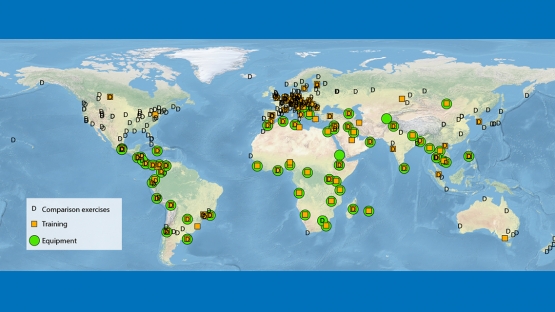Excellent, good, questionable or unacceptable: how good is your water chemistry analysis? Scientists can find out through comparison. For the past 30 years, the IAEA has been conducting isotope hydrology interlaboratory comparisons among hundreds of laboratories and has become a global source of isotope hydrology proficiency tests.
“A key aspect in any science is the quality of your measurements,” said Luis González Hita, Hydrology Technologist at the Mexican Institute of Water Technology. “This is true for isotope hydrology, too. Guaranteeing that our data are correct and reliable gives us a solid base for convincing policymakers.”
Isotope hydrologists are scientists who study water resources using isotopic data. Their studies provide critical information for developing strategies and policies to protect water. Approximately every four years, over 300 isotope hydrology laboratories take part in global interlaboratory comparison proficiency tests organized by the IAEA.
Comparing data with IAEA test samples, which include a wide range of waters from around the world, helps staff in each laboratory detect and improve analytical weaknesses. It helps them ensure they are consistently producing accurate and precise data.
Regular cross-comparisons are ever more relevant today: technology is advancing rapidly, making isotope hydrology methods and instruments cheaper and more accessible. Although these technology changes have their benefits, they lead to a higher risk of error because newcomers to the field often have less advanced training.
“Nowadays, especially with laser-based methods, technology does a lot of the work,” González Hita said. “This means that scientists are relying more on methods to do the assessments, but it also means they’re relying less on skill sets.”
A key aspect in any science is the quality of your measurements. This is true for isotope hydrology, too. Guaranteeing that our data are correct and reliable gives us a solid base for convincing policymakers.






